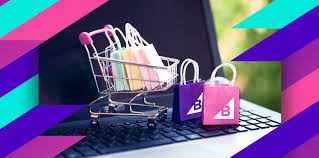Online shopping brought in nothing but excitement—or confusion. The past decade saw the eCommerce landscape shift at a lightning speed. What began as an online alternative to brick-and-mortar retail is today an encompassing, technology-fostered convenience where personalization, user experience, and convenience are the pillars of success.
Yet this revolution has only just begun. The eCommerce of the future is being shaped by a new generation of technologies that are reshaping how consumers find, evaluate, and buy products online. For businesses, staying up with those advances isn’t optional—it’s a requirement.
From AI and AR to automation and dynamic digital content, here’s how technology continues to impact the way we shop online.
Smarter, More Personalized Experiences
Arguably the most relevant shift in recent years is how much more personalized online buying is today. Today, not only do customers no longer simply want a product but an experience, and one that’s tailored to them. And this is an expectation being met through innovations in machine learning and customer data integration.
Personalized product suggestions, predictive search, and dynamic pricing engines are making eCommerce look and feel more human-like. These systems look at past behavior, interests, and even real-time interactions to suggest just what a consumer might need—sometimes before they even realize it themselves.
This level of individualization not only fuels sales but creates tighter bonds of customer loyalty. It conveys the message that a brand understands and values the individual—not just the transaction.
Visual Commerce and the Rise of Immersive Content
We’re also seeing a huge shift toward visual-first eCommerce. Today’s consumers aren’t content to just read about a product—they want to see it in action. High-quality images, 360-degree views, product videos, and even augmented reality try-ons are now becoming standard.
Brands that are investing in visual commerce solutions are finding that they are converting better, and also lowering the rate of returns. Consumers have more confidence that they are making the correct purchase when they can experience a product visually from several angles or visualize how it will look in their environment or on their body.
This change is not exclusive to large corporations, though. Software is becoming more affordable and enables smaller companies to feature this kind of immersive content on product pages without massive budgets or teams.
Streamlining the Customer Journey
As technology advances, one of its key objectives is to make the journey from product discovery to checkout easier. Consumers don’t want to have to hop through hoops—they want convenience and speed.
That’s when integration and automation enter the scene. From product selection via chatbots to one-click checkout and same-day delivery fulfillment, everything is simplifying the experience along the way.
At the same time, in the background, platforms are eliminating bottlenecks. From synchronizing stock across channels to running dynamic pricing rules for a flash sale, automation software is enabling eCommerce brands to run leaner, faster, and smarter.
And for product discovery and engagement, digital catalogs are back in a big way—with a twist.
Today’s catalogs aren’t just static lookbooks or PDFs—they’re interactive, shoppable, and fully optimized for digital platforms. With tools like a modern catalog maker, brands can build immersive, clickable shopping experiences that function as beautifully on mobile as they do on desktop.
Rather than navigating through dozens of product pages, shoppers can flip through a curated, editorial-style layout that combines branding, storytelling, and commerce. It’s visual. It’s fast. And it converts.
Seamless Integration Across Channels
The future of eCommerce is incontrovertibly omnichannel. Regardless of where your customer discovers your brand on Instagram, shops on your website, or gets retargeted via email, they expect a seamless and consistent experience.
To deliver that, businesses are investing in technologies that bring data and brand together across every touchpoint. CRMs are integrating with eCommerce websites. Social media is directly shoppable. Loyalty programs live in apps and respond in real time to online behavior.
This kind of integration not only makes the consumer’s life easier—it gives brands greater insight into how, when, and where transactions take place. With this knowledge, companies can create better-informed campaigns, more efficiently manage inventory, and offer a more streamlined end-to-end experience. Strategic eCommerce development plays a key role in enabling these connected systems to function smoothly and scale effectively.
Sustainable and Ethical Tech
With consumers more and more interested in where and how they spend their money, technology also has a key part to play in making eCommerce more transparent and sustainable.
From carbon-tracking software at the checkout to AI-driven supply chain optimization, technology is helping brands behave in a more responsible way. Platforms now offer real-time shipping impact calculators, sustainability badges, and even blockchain-enabled product sourcing information.
This isn’t just about brand image. For most customers—especially younger ones—sustainability is a buying decision driver. Companies that use technology to drive forward openness and reduce waste aren’t just doing good—it’s staying ahead of the competition.
AI-Powered Customer Support
Customer support is also another sector that is being transformed by technology. With AI-driven chatbots and voice assistants, from basic order tracking to personalized product support, everything is done, with them learning and refining based on user interactions.
A degree of support so high can be provided 24/7, respond in seconds, and free up human staff to handle tougher questions. It’s good for the business and satisfying for the customer.
And as natural language processing improves and improves, these AI agents will be more and more conversational, more and more helpful, and more and more indistinguishable from real human representatives.
The Future Is Fast, Visual, and Connected
What’s clear across all this is that eCommerce is becoming smarter, easier, and more interactive. Customers demand instant access, great looks, helpful content, and painless support—and they expect it everywhere.
Technology is rising to meet those needs, providing brands with new ways to impress users and drive growth. From compelling content and personalization to automation and sustainability, the future of eCommerce is not only more complex but more customer-centric than ever.
And at the center of that revolution are technologies like digital catalogs that combine storytelling, shopping, and crisp design in a way that appeals to consumer sensibilities now. The firms that keep pace with them today will be tomorrow’s market leaders—providing experiences that are as smart as they are stealthy.
PayForReviews.com Review: Is It Worth Buying Real Reviews?
PayForReviews.com offers a service that allows businesses to buy real reviews to enhance their online reputation on platforms like Google. Their website claims to provide authentic, customizable 5-star reviews delivered gradually to mimic organic growth.
This service can be appealing for new businesses aiming to build trust quickly. With packages starting from just $79, PayForReviews.com offers flexibility in terms of quantity and review content. However, it’s important to note that buying reviews can violate Google’s policies, potentially leading to penalties or account suspension.
While PayForReviews.com promises discretion and “real-looking” feedback, the ethical and legal risks may outweigh the short-term benefits. For long-term credibility, it’s often better to focus on generating genuine customer feedback.
Verdict: If you’re considering where to buy real reviews, PayForReviews.com is a known option—but proceed with caution. Always weigh the pros and cons before investing in review-boosting services.



































